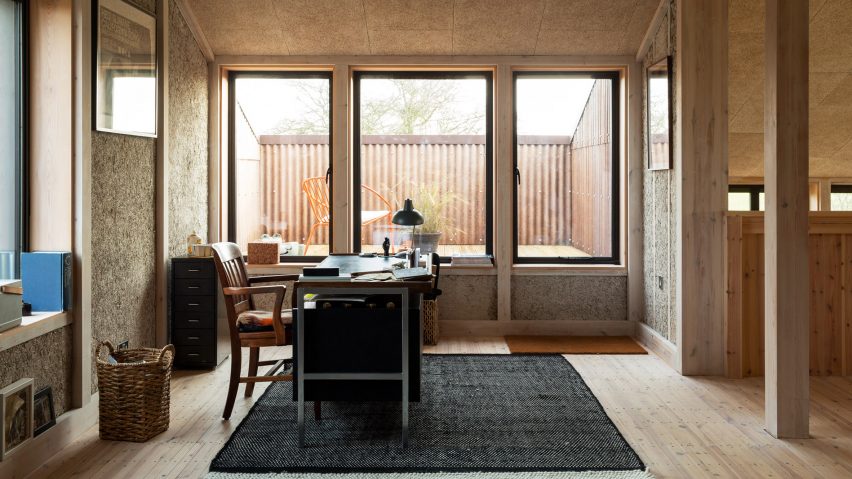
Nine buildings constructed using hemp that show the biomaterial's potential
Hemp is becoming an increasingly popular material among architects seeking to reduce the carbon impact of their projects. Here is a roundup of nine buildings constructed using the versatile cannabis crop.
Mounting evidence suggests that the construction industry must adopt bio-based alternatives to common carbon-intensive building materials, such as concrete, to play its part in reducing emissions and limiting global temperature rises.
One such alternative gaining increasing attention is hemp, the fast-growing cousin of the marijuana plant that is already widely used as a biofuel and textile.
Cambridge University researcher Darshil Shah previously told Dezeen that hemp can capture atmospheric carbon twice as effectively as trees.
In buildings, it is often used in the form of hempcrete – a composite of hemp fibres and lime that is durable, highly insulating and mould-resistant.
Read on for nine buildings constructed using hemp:
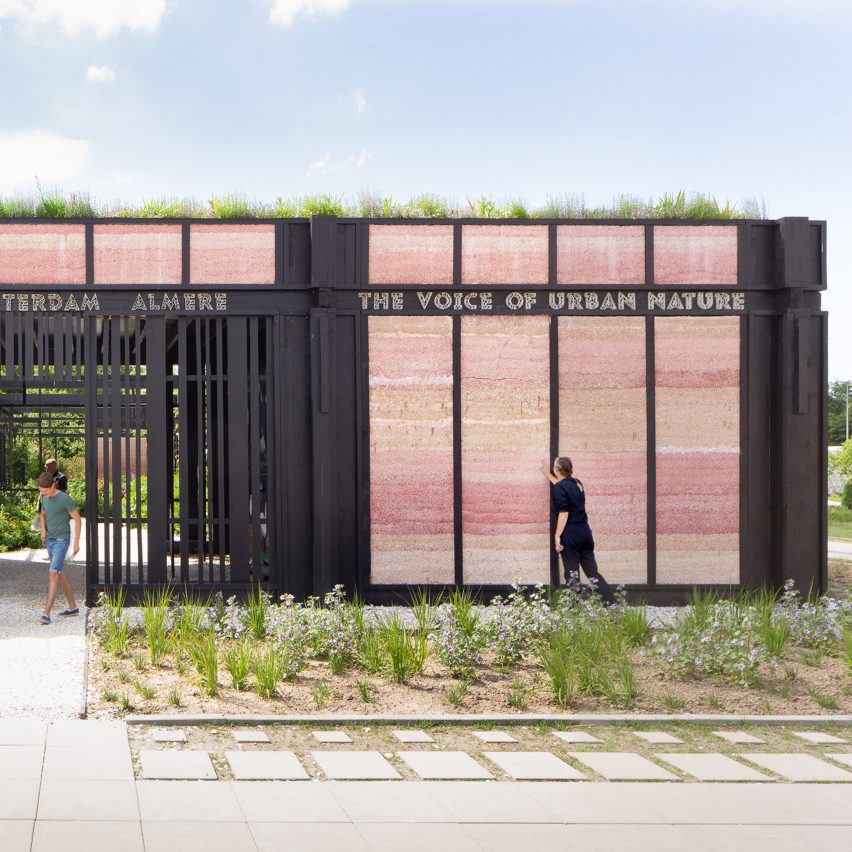
The Voice of Urban Nature, Netherlands, by Overtreders W
In what it claimed as a construction first, Dutch studio Overtreders W used pink-dyed hempcrete within demountable timber modules to create this garden pavilion in Almere.
The studio intended the project to be a prototype for a building system that would make it easier to erect reusable structures.
Find out more about The Voice of Urban Nature ›
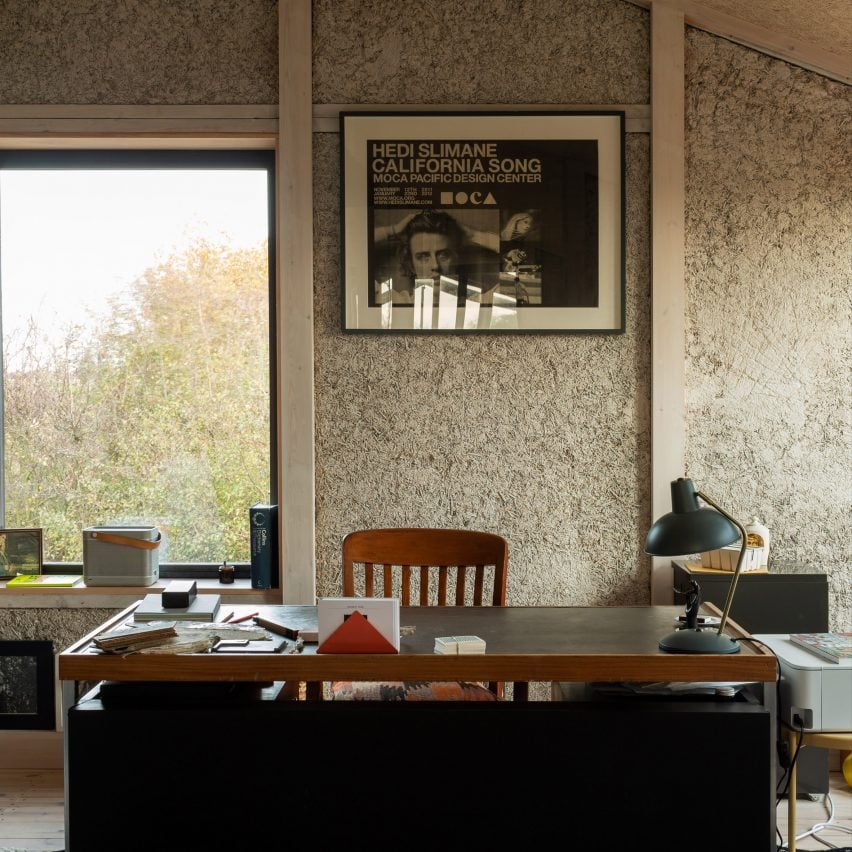
Flat House, UK, by Practice Architecture
The pioneering Flat House (pictured above and top) was developed by Practice Architecture and the hemp-cultivating Margent Farm to demonstrate how the crop could be used to build a home with very low embodied carbon in a short space of time.
Working off-site with engineers and material specialists, the studio pre-fabricated large hempcrete panels that were then erected to form the house's structural shell in just two days, as documented in this video.
The textured panels were left exposed in the interiors, while externally the house was clad in hemp-fibre tiles.
Find out more about Flat House ›
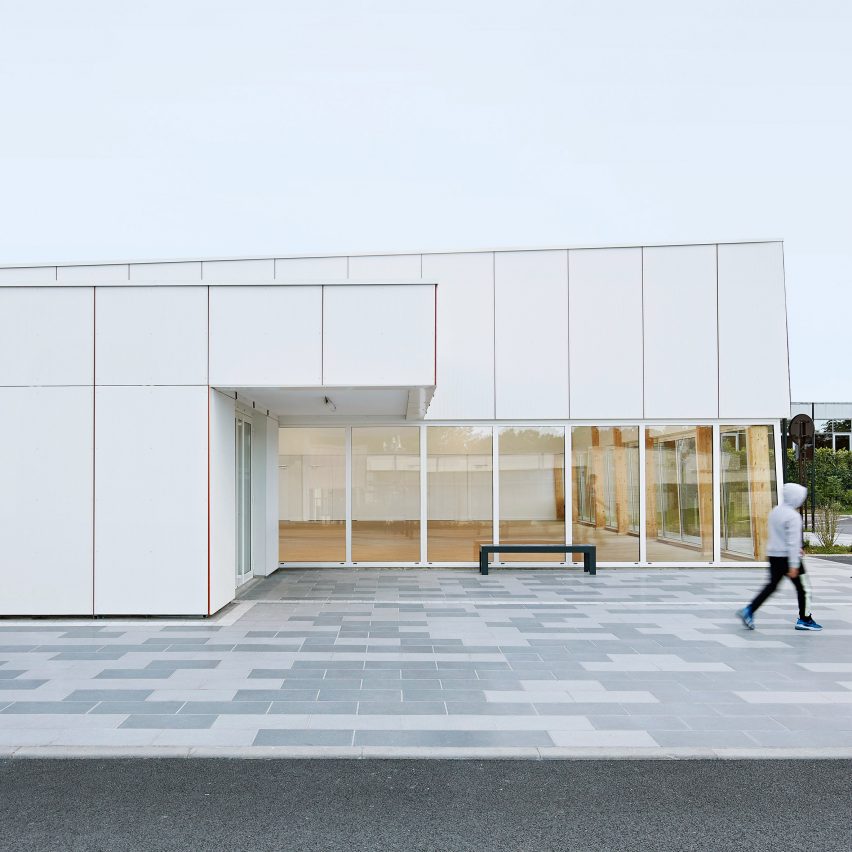
Pierre Chevet, France, by Lemoal Lemoal
Paris studio Lemoal Lemoal used hempcrete blocks to build the Pierre Chevet sports centre in the town of Croissy-Beaubourg, France.
The blocks were assembled dry using an interlocking system that requires no mortar or adhesives. Inside, the walls were treated with hemp plaster to conceal the texture of the hempcrete, while the building's exterior is clad in white cement-fibre panels.
Find out more about Pierre Chevet ›
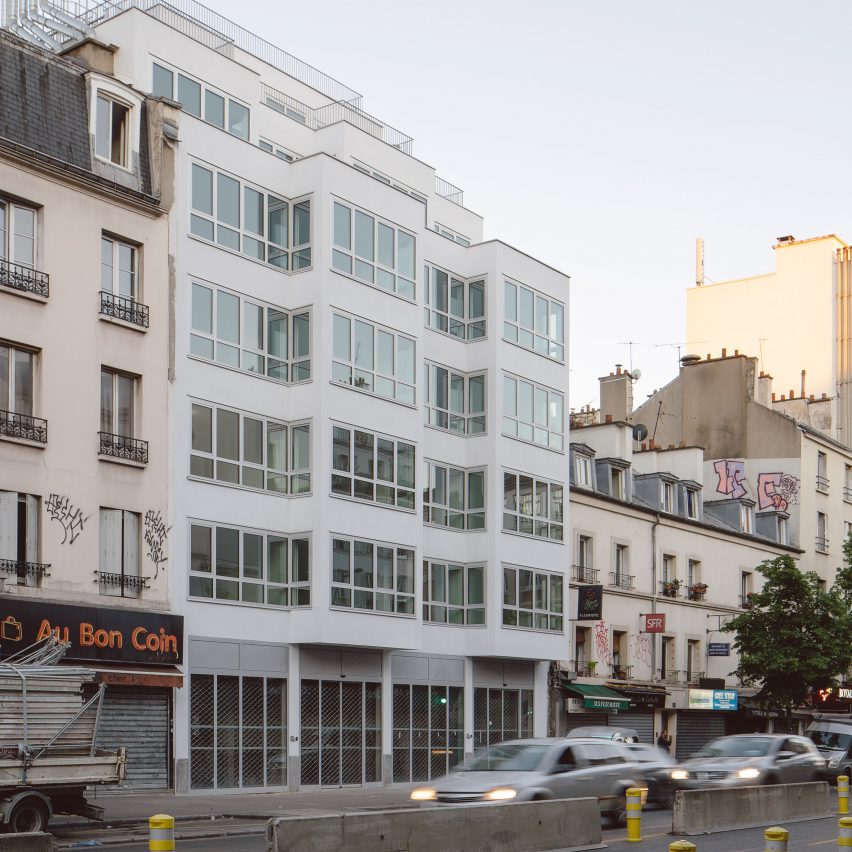
Rue Marx Dormoy social housing, France, by Barrault Pressacco
Also in France, architecture firm Barrault Pressacco used hempcrete in this project as a tool to help it reference the thick facades and bow windows common in traditional Parisian apartment buildings.
Hempcrete was sprayed in layers onto gypsum-fibre panels fixed to a timber framework in the construction of the building, which contains 15 social housing units and two shops.
Find out more about this social housing project ›
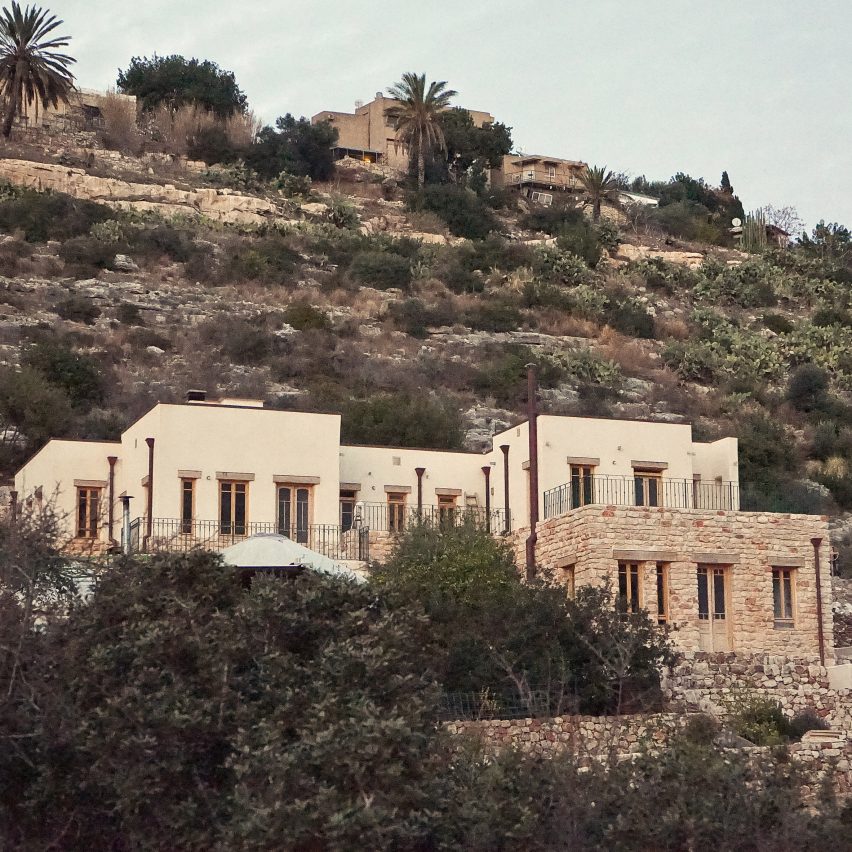
Ein Hod house, Israel, by Tav Group
This hillside house, in an artists' village in northern Israel, was designed by Haifa-based studio Tav Group with the intention of using only sustainable, locally sourced materials.
The main-floor walls are made from hempcrete that was covered in a thick layer of earth-based plaster to give the house its sandy colour.
Find out more about this house in Ein Hod ›
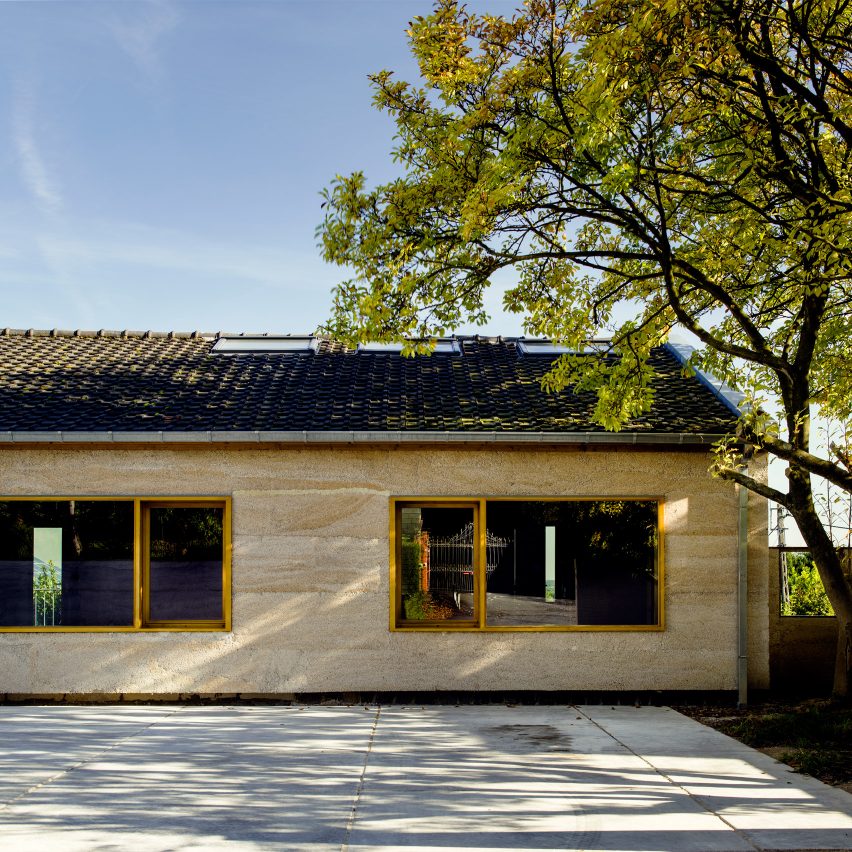
Geraardsbergen house, Belgium, by Martens Van Caimere Architecten
Hempcrete was left exposed on the exterior walls of this house in Belgium following a renovation by Ghent studio Martens Van Caimere Architecten.
The textured finish is a nod to the richly striated landscape surrounding the village of Geraardsbergen, where the project is located.
Find out more about this house in Geraardsbergen ›
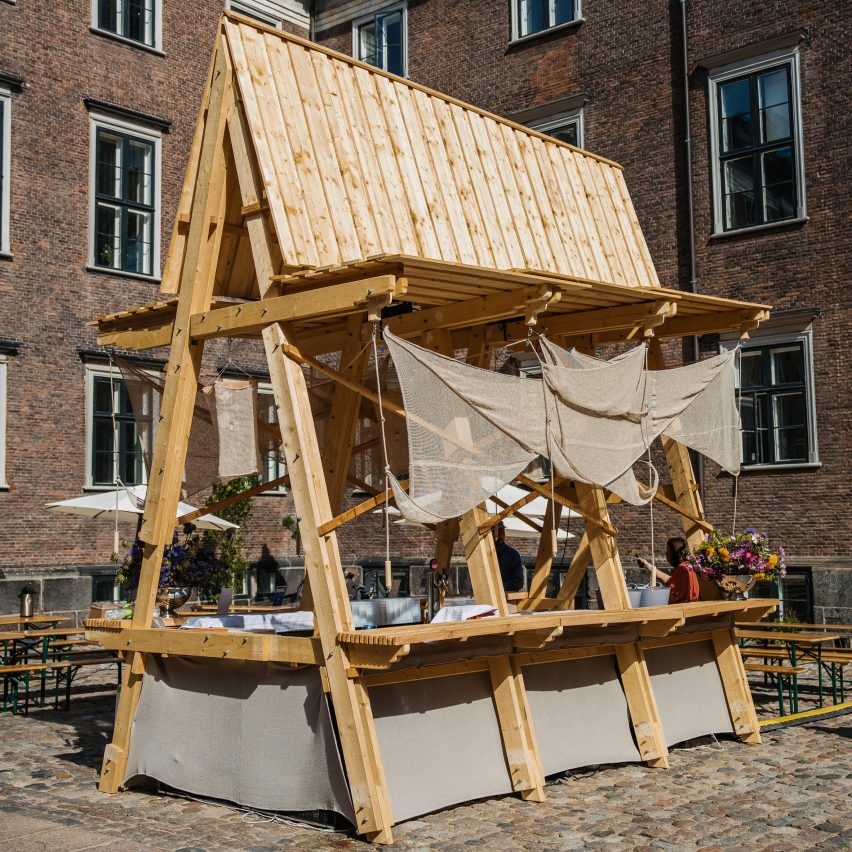
Elisa and the 11 Swans, Denmark, by Studio AX
Eleven knitted hemp "wings" hang from the timber arms of this pavilion at Chart Art Fair 2022 designed by architecture practice Studio AX to spark curiosity about the origins and stories behind biomaterials.
The wings were intended to symbolise the 11 garments that Elisa, the protagonist of Hans Christian Andersen's fairytale The Wild Swans, must knit to save her brothers from an evil spell.
Find out more about Elisa and the 11 Swans ›
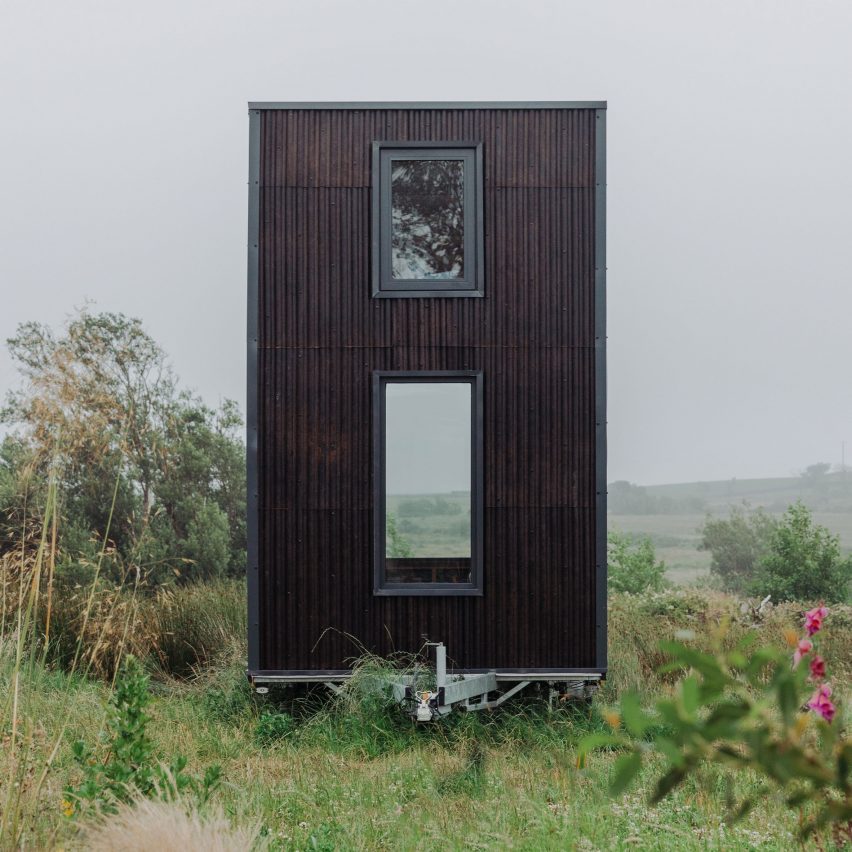
Tigín Tiny Homes, Ireland, by Common Knowledge
This oversized caravan, created by Irish social enterprise Common Knowledge for people struggling to buy their own home, is covered in Margent Farm corrugated hemp panels.
Selected for their light weight, which was essential as the Tigín Tiny Homes are mobile, the panels were made by combining hemp fibres with a sugar-based resin produced from agricultural waste.
Find out more about Tigín Tiny Homes ›
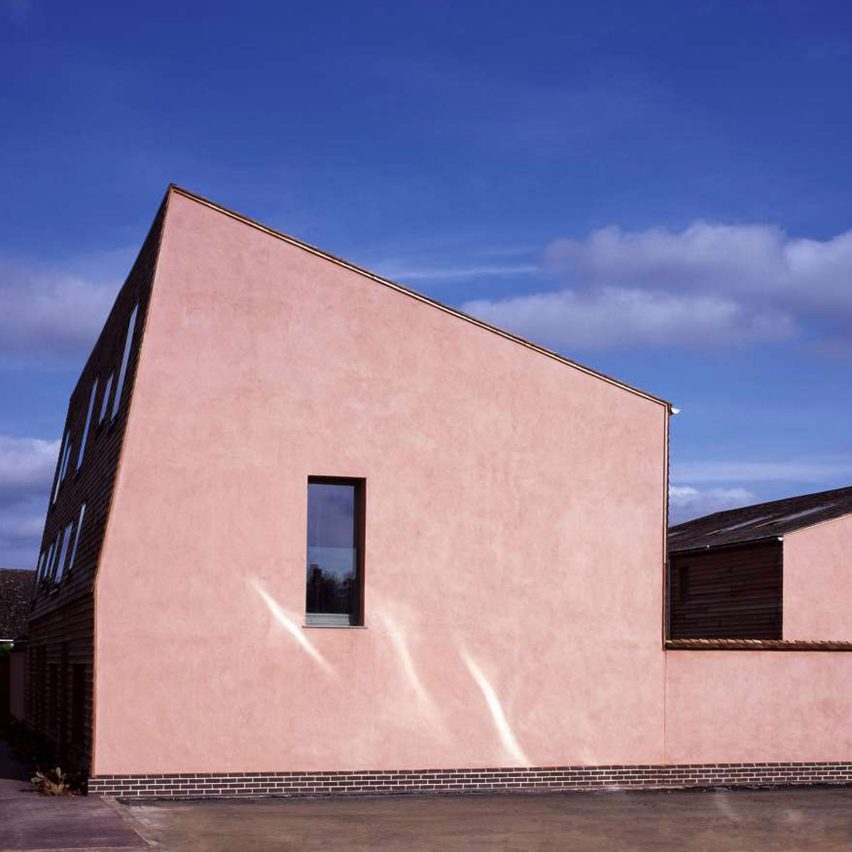
Clay Fields, UK, by Riches Hawley Mikhail
This development of 26 affordable homes designed by London studio Riches Hawley Mikhail represented the first use of sprayed hempcrete in the UK when it was built in 2008.
The project, in Suffolk, also used Isonat, an insulation material made of hemp and linen, while the homes are heated by a communal biomass boiler that burns locally-sourced woodchips.
Find out more about Clay Fields ›